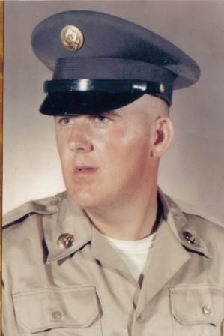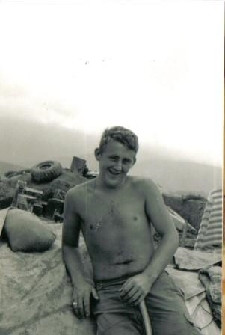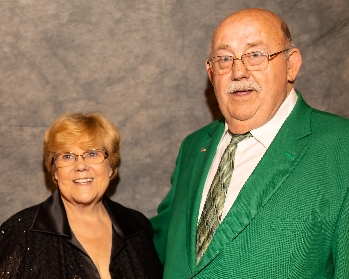Floyd Alexander B/2-319 , A/2-506




In June of 1968, the high school in Jerseyville, Illinois sent Floyd Alexander into the working world to work in a local steel company. By 1969 Floyd had decided to volunteer for the draft rather than wait for them to come get him.
He took his basic in Fort Leonardwood, Missouri that summer and then took AIT in Fort Sill, Oklahoma for artillery. The need for men was high in Vietnam at that time so he went from Fort Sill to his thirty-day leave right to Vietnam and started his tour on December 22, 1969.
His first assignment was with B 2/319 Artillery on Fire Support Base (FSB) Jack located just west of Camp Evans and Camp Eagle in I Corps. This base was on a low hill in the flat lands just east of the mountains and jungle. It was used during the rainy season since it could be re-supplied by road is the weather stopped the helicopters.
In April 1970, FSB Ripcord was re-opened and B 2/319 set to work on the hill under Capt. Rich providing fire support for the troops in the area. Shortly after moving to Ripcord, Floyd was selected to replace Jim Hill as RTO for the Forward Observer (FO) Tom Brennon attached to A 2/506, which at that time was run by Capt. Burkert. By the end of May Burkert was replaced by Charles Hawkins and in June lt. Steve Olson had replaced Lt. Brennon but Floyd remained as RTO. Alexander and LT. Olson quickly became good friends and felt like a brother to Floyd. He was invited to be Olson’s best man at his wedding planned for his return to Georgia in 1971.
Today Floyd doesn’t remember much about his tour. It was just lots of days walking through the jungle with occasional encounters with the NVA (North Vietnamese Army) and a hot LZ (landing zone where you are receiving hostile fire). However, he was glad to get off the firebase where you were subject to sniper fire and mortar rounds dropping in unannounced.
On July 22, 1970 Alexander remembers standing next to Olson as usual in preparation for moving out. Being with the Captains CP (command post) there were two platoons ahead of them and one behind. Suddenly they heard rifle fire and explosions to the front. Everything was happening fast as they got down under cover.
Lt. Olson got up to see where to direct fire while Floyd pulled on him to stay down. At that moment Lt. Olson was hit with an RPG (rifle propelled grenade) which killed him instantly. Nearby, Sgt. Wagnon, the secure radio operator, had a satchel charge explode in his face, blinding him. Floyd who was between the two received only minor shrapnel wounds. Alexander saw five NVA by a nearby tree up on the hill. He emptied his magazine at them and saw them all fall. Whether they were hit or seeking cover Floyd didn’t have time to discover. During the battle Floyd saw one of the medics (Fry?) get killed as he tried to work on one of the wounded soldiers. He remembers Sgt. Long our Vietnamese interpreter, getting shot in both legs and bleeding to death before he could get adequate medical attention. Floyd thought that Wagnon was dead and was about to leave the site when he heard him hollering. Knowing that he could not drag Wagnon out without help and not wanting to leave him behind, Floyd lay next to him and covered Wagnon’s head with his arm and chest. They lay there pretending to be dead as the battle raged about then for hours. Others reported that Floyd saw NVA moving among our dead and wounded and shooting them again to be certain. NVA were reported to have moved to within a few yards of Alexander and Wagnon before being chased off by fire from US troops.
As the battle wore down, Floyd was able to crawl back. He hollered “Currahee” and got the same response but was not sure it was our guys. But once he was sure he got help bringing in Wagnon.
During the long night he helped call in artillery fire for Capt. Hawkins but was certain the NVA would return and Alpha would be over run before dawn. He remembers being scared, praying and just wanting to go home.
On the 23rd, Delta 2/506 walked into the battle area and helped extract Alpha Company. Floyd was treated for his wounds and had numbness in his leg for a long time after due to the injuries. Even today the numbness comes and goes.
A week later he had a new FO and was once more walking the jungle hills with Alpha Company. He got an early out and left the country in November and then finished his enlistment at Fort Hood serving on an honor guard.
Service over he returned to work at the steel company till it closed 25 years later. He followed this us with a job on the state highway department till his present retirement.
Three years after service he married the lovely Diane Crotchett who has loved and encouraged him ever since. They have two daughters and presently four grandchildren with a grandson due in March 2006. Life is good!